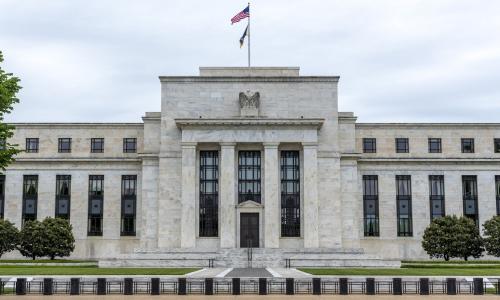It was a relatively quiet week as markets and consumers ready themselves for the Holiday season. The biggest news had to do with the increase in the yield between the 2 year Treasury Note and the 30 year bond. The yield curve earlier in the week was the steepest it's been since 1992. What's behind this? The Fed is keeping short term rates low. Long-term rates are rising though as investors look ahead to increased Treasury security offerings and investors become more and more concerned about nflation. Still, for all the worry about inflation, there is remarkably little on the horizon. As this Wall Street Journal article indicates:
"Based on prices of U.S. Treasury Inflation-Protected Securities, where principal and interest payments are adjusted for changes in the CPI, inflation is expected to be less than 1% in 2010, says Michael Pond, Treasurys and inflation market strategist at Barclays Capital.
Looking a little bit further out, TIPS prices suggest inflation is expected to be 1.5% per year over the next five years and roughly 2.1% over the next 10 years, according to Barclays. "
Some investors feel that TIPS are just cheep and haven't yet priced in future inflation. Maybe so. But there is still tremendous slack in the economy and it is far more likely we'll see an asset bubble before we see a jump in CPI inflation.
The impact in the steep yield curve can be seen in the dichotomy between deposit and lending products.
CD and Savings Rates
Short term and medium term rates remain low and dropping.
All savings and CD rates dropped last week. Savings rates dropped last week by 4 basis points from 1.61% APY to a new low of 1.57% APY. One year CD rates also dropped by 4 basis points to 1.95% APY while 3 year CD rates dropped by 8 basis points to 2.72% APY. Five year rates dropped by 9 basis points from 3.35% APY to 3.26% APY. It's uncharacteristic for 5-year rates to drop by so much and after rallying a bit from summer lows of 3.22% APY are closing in again on that level.
Looking at the yield ratio we have developed for deposit accounts, the spread the spread between savings rates and 36-month CDs came down slightly due to the drop in 3-year CD rates. This drop in longer-term CD rates reverses the slightly upward movement that we saw since the summer. It's possible we'll see 5-year CD rates below 3% APY in the next couple of months if the current trend continues.
My guess is that the downward blip in 3 and 5 year CD rates was a temporary phenomena. Treasury notes and bonds saw their yields rise last week and as the Fed begins to remove stimulus it's easier to see rates going up in the future than going down. It's still hard to recommend putting money into anything longer-term than a 12-month CD, especially with rising equity markets and signs that the economy may be coming back to life. For those worried about interest rate risk, cd laddering may be a good way to smooth out the return you receive from your CD portfolio.
Mortgage Rates
Longer term mortgage rates for the first time in several weeks.
According to the BestCashCow rate tables, the average 30-year fixed rate mortgage rose from 4.957% the previous week to 4.971%. The fifteen-year fixed-rate mortgage average went from 4.4% to 4.43%. While mortgage rates rose on most products, they are still close to historic lows. This is a good time to refinance and these rates won't last once the Fed ends its mortgage and Treasury Bond buybacks. Many analysts expect rates will increase into the 6% range once this happens.
You can compare the best mortgage rates in our new mortgage section.













Add your Comment
or use your BestCashCow account